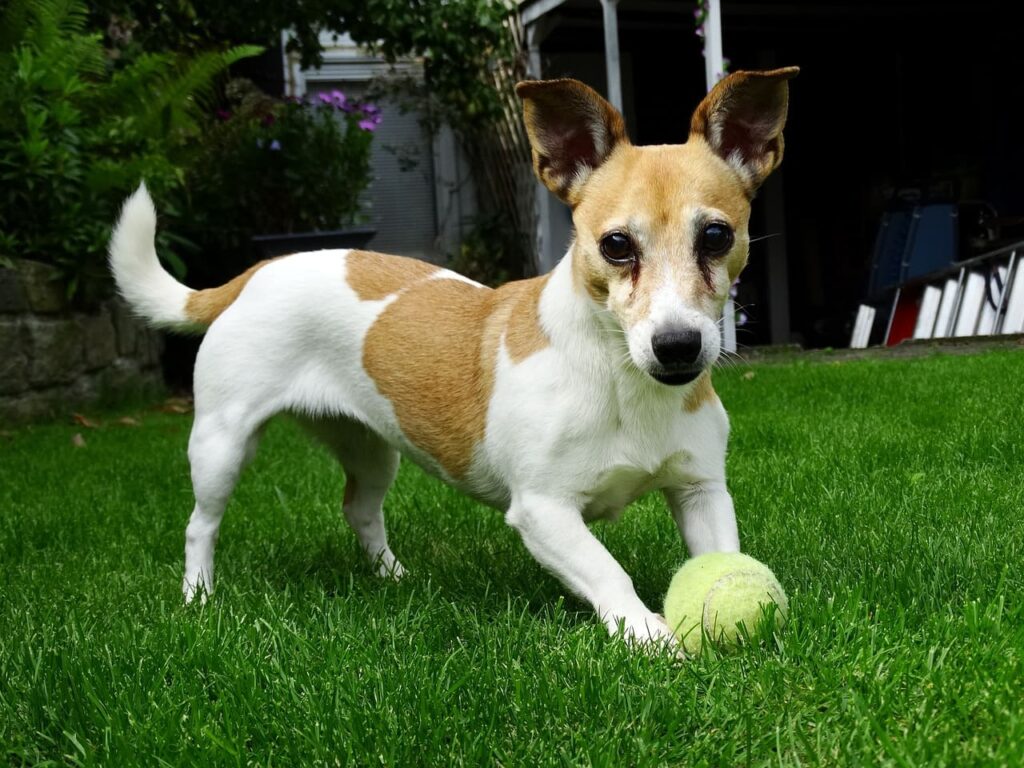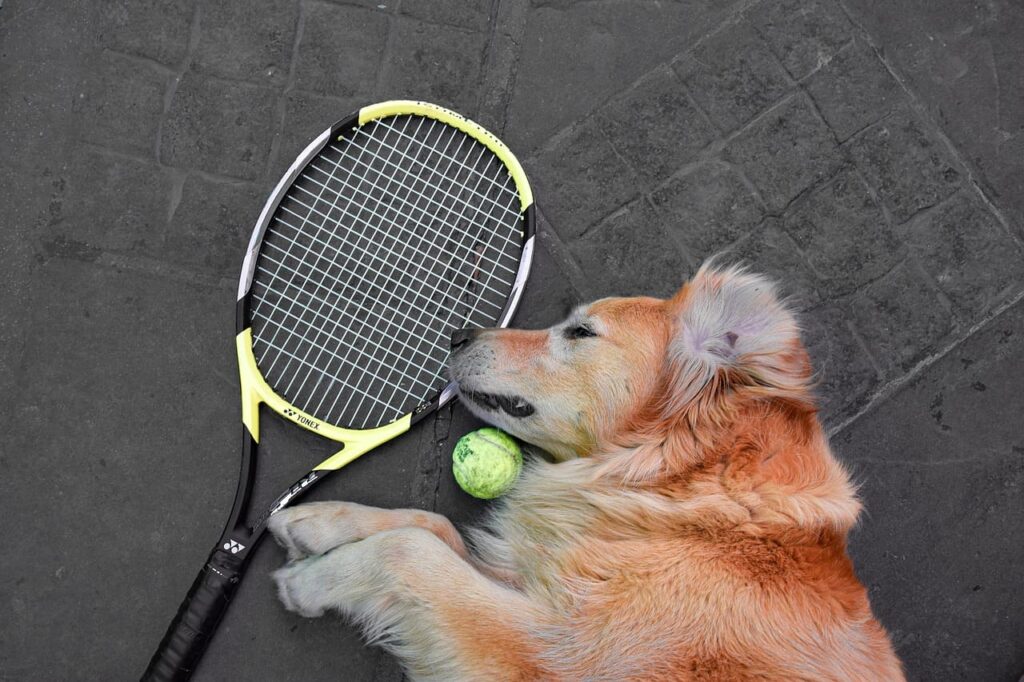Why Do Dogs Love Tennis Balls: Have you ever thrown a tennis ball to your dog and watched them go absolutely bonkers? There’s something about these neon fuzzballs that gets our canine companions all riled up. But why do dogs love tennis balls so much? Is it the bounce, the chew, or something deeper? Let’s fetch some answers!
Reasons Why Do Dogs Love Tennis Balls
Instinctual Appeal
At the heart of a dog’s obsession with tennis balls is their primal hunting instinct. Ancestrally linked to wolves, dogs have inherited a strong prey drive that compels them to chase and capture. Tennis balls, with their erratic movements and bouncy nature, closely mimic the behavior of small prey animals such as rodents or birds, sparking this deep-seated instinct. The act of chasing down a tennis ball allows dogs to exercise these ancient behaviors in a modern, safe context.
Prey Drive: This intrinsic desire to pursue and catch is vividly displayed in the game of fetch. The tennis ball’s unpredictable bouncing pattern triggers the chase, tapping into the dog’s predatory instincts. It’s a deeply satisfying activity that replicates the thrill of the hunt without the outcome, providing a harmless outlet for their natural behaviors.
Movement: The specific way tennis balls move—suddenly darting in one direction, then another, closely mirrors the unpredictable scampering of prey in the wild. This unpredictability keeps dogs engaged and continuously stimulates their hunting instincts, making tennis balls far more appealing than static toys.
Sensory Attraction
Dogs experience the world profoundly through their senses, and tennis balls appeal to multiple sensory stimuli:
Size and Texture: The size of a tennis ball is almost universally perfect for dogs to hold in their mouths, offering a satisfying object to grip. The fuzzy outer texture provides a unique tactile experience that dogs seem to find irresistible, perhaps mimicking the fur of their ancestral prey.
Sound and Smell: The distinctive sound a tennis ball makes when it hits the ground can excite a dog, signaling playtime. Additionally, the smell of the rubber and felt materials used in tennis balls can be intriguing to dogs, who have a much more developed sense of smell than humans. This combination of unique sounds and scents can make tennis balls particularly enticing to our canine friends.

Breed Specificity
While many dogs show interest in tennis balls, certain breeds exhibit a more pronounced obsession due to their historical roles and genetic predispositions. Breeds with a strong retrieval instinct, such as Labrador Retrievers, Golden Retrievers, and Border Collies, are particularly drawn to fetching activities. These breeds were often selected for their ability to hunt and retrieve game, a trait that makes them natural aficionados of fetch games involving tennis balls. The joy and satisfaction they derive from retrieving a thrown ball tap into these deep-rooted instincts, showcasing the fascinating interplay between genetics and behavior.
Understanding these nuanced reasons behind dogs’ love for tennis balls illuminates the complex interplay between instinct, sensory engagement, and breed-specific traits. This insight not only enhances our appreciation of our furry friends’ behaviors but also guides us in selecting appropriate toys that fulfill their natural needs and preferences.
Psychological Benefits
The joy and excitement dogs exhibit when playing with tennis balls go beyond mere physical exercise; they tap into significant psychological benefits. Engaging in play, especially fetch, stimulates a dog’s mind, providing mental exercise that is just as crucial as physical activity.
This kind of stimulation can help reduce behavioral problems, alleviate boredom, and prevent anxiety. The process of anticipating the ball’s trajectory, running after it, and figuring out how to bring it back involves problem-solving and decision-making, which keeps a dog’s cognitive functions sharp.
Moreover, the satisfaction of catching the ball and returning it to their owner reinforces positive behavior and fosters a sense of accomplishment and happiness.
Health and Safety Considerations

While tennis balls are beloved toys for many dogs, they also present potential health and safety risks. One of the primary concerns is the risk of choking. Dogs, especially large breeds, can accidentally swallow a tennis ball, leading to a choking hazard or obstructive foreign body in the digestive tract.
Additionally, the abrasive texture of the tennis ball’s felt can wear down the enamel on a dog’s teeth over time, leading to dental issues. Prolonged chewing on tennis balls may also contribute to wear and tear on their teeth, potentially resulting in dental damage or loss.
Alternatives and Safety Measures
To mitigate these risks, pet owners can consider safer alternatives to traditional tennis balls. Products specifically designed for dogs, such as rubber balls that are more durable and appropriately sized, can reduce the risk of choking and dental wear. Toys that are made with dog-friendly materials can also provide the same level of enjoyment without the potential health risks.
Additionally, supervising playtime to ensure that dogs do not chew on tennis balls too aggressively and keeping play sessions with these balls to a moderate duration can help prevent accidents and injuries. Providing a variety of toys can also prevent dogs from becoming overly fixated on any single object, promoting a healthier play environment.
Conclusion
Dogs’ love for tennis balls is a complex blend of instinct, sensory attraction, and psychological need for play and exercise. While this obsession can be fun and enriching for both pets and their owners, it’s crucial to play it safe with appropriate toys and vigilant supervision. So, next time you’re out playing fetch, you’ll know just why your dog can’t get enough of that tennis ball – and how to keep their playtime both fun and safe.

